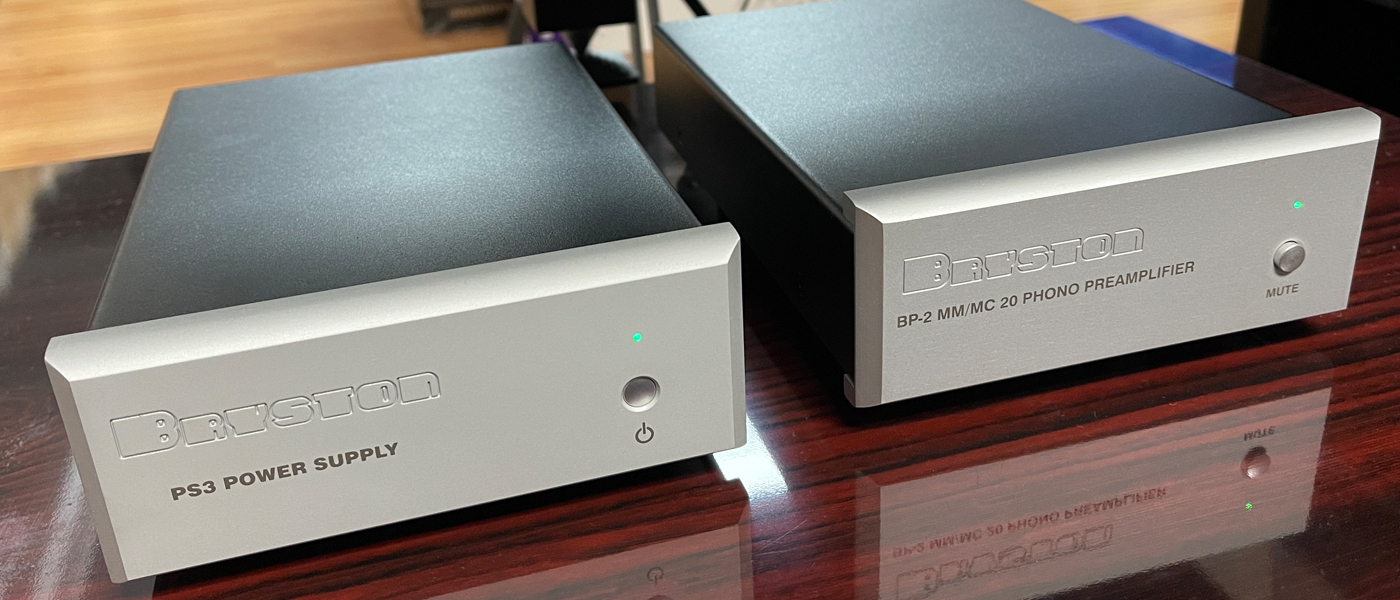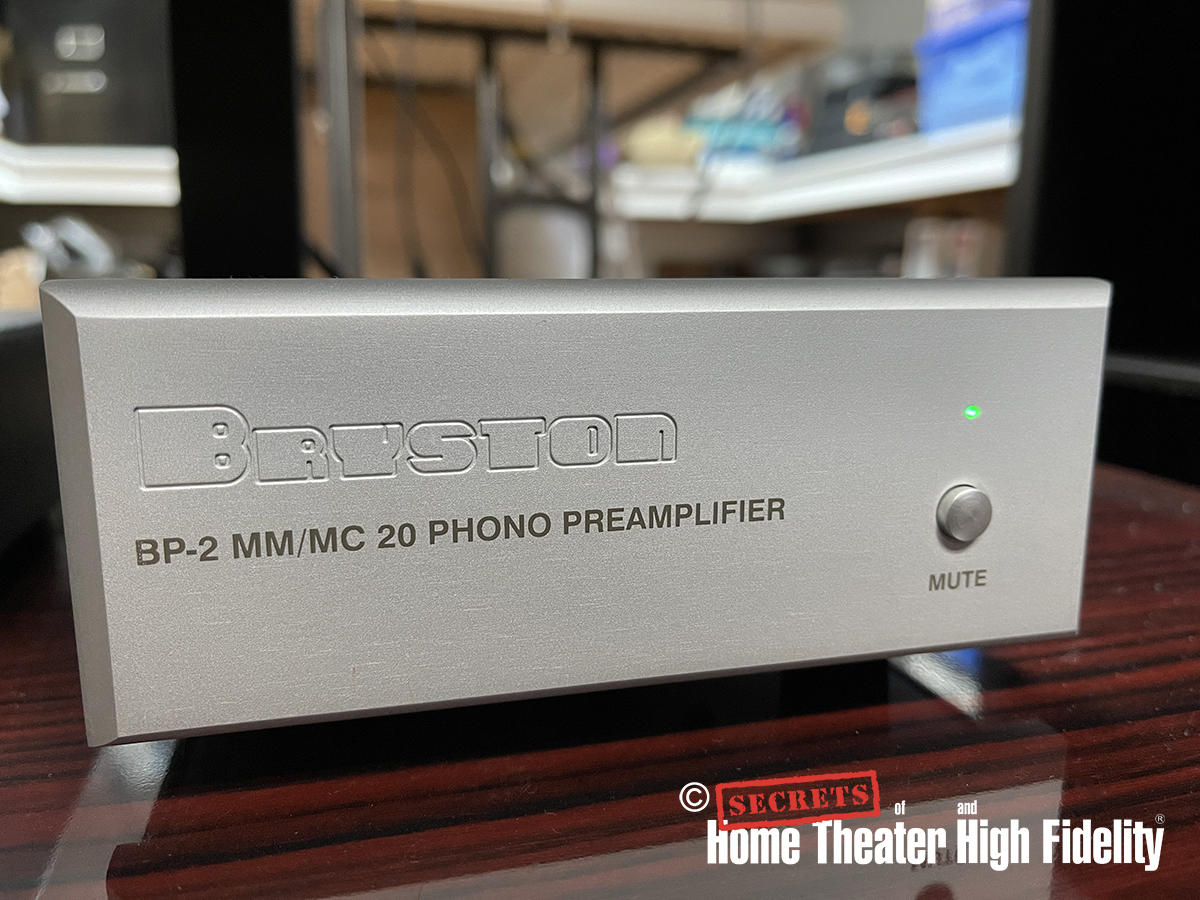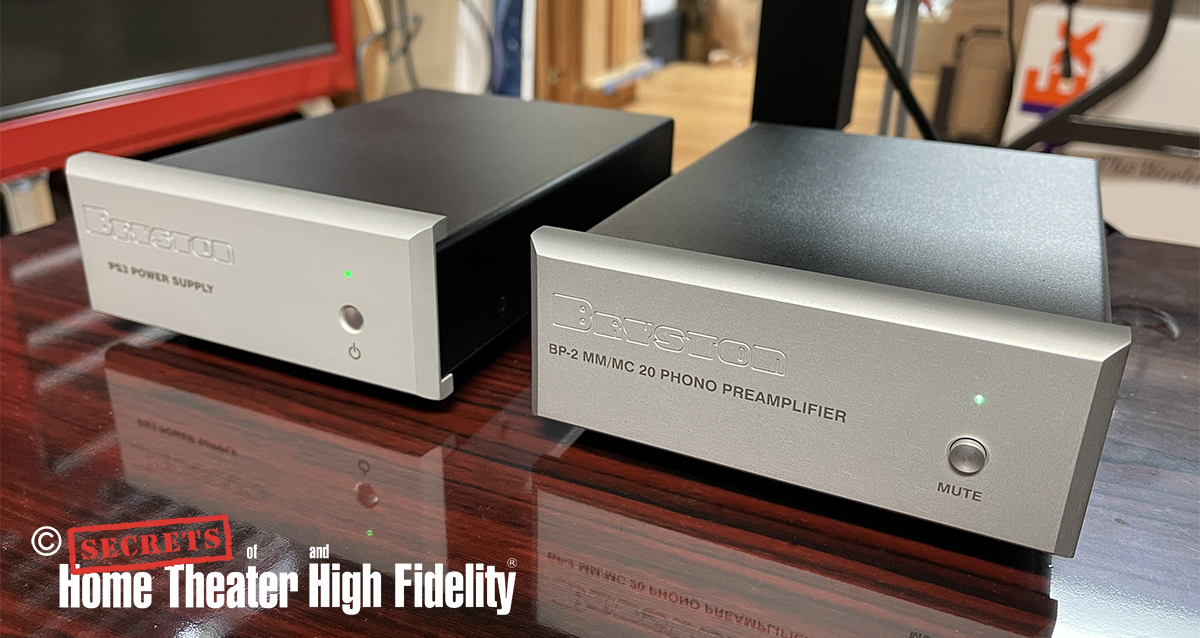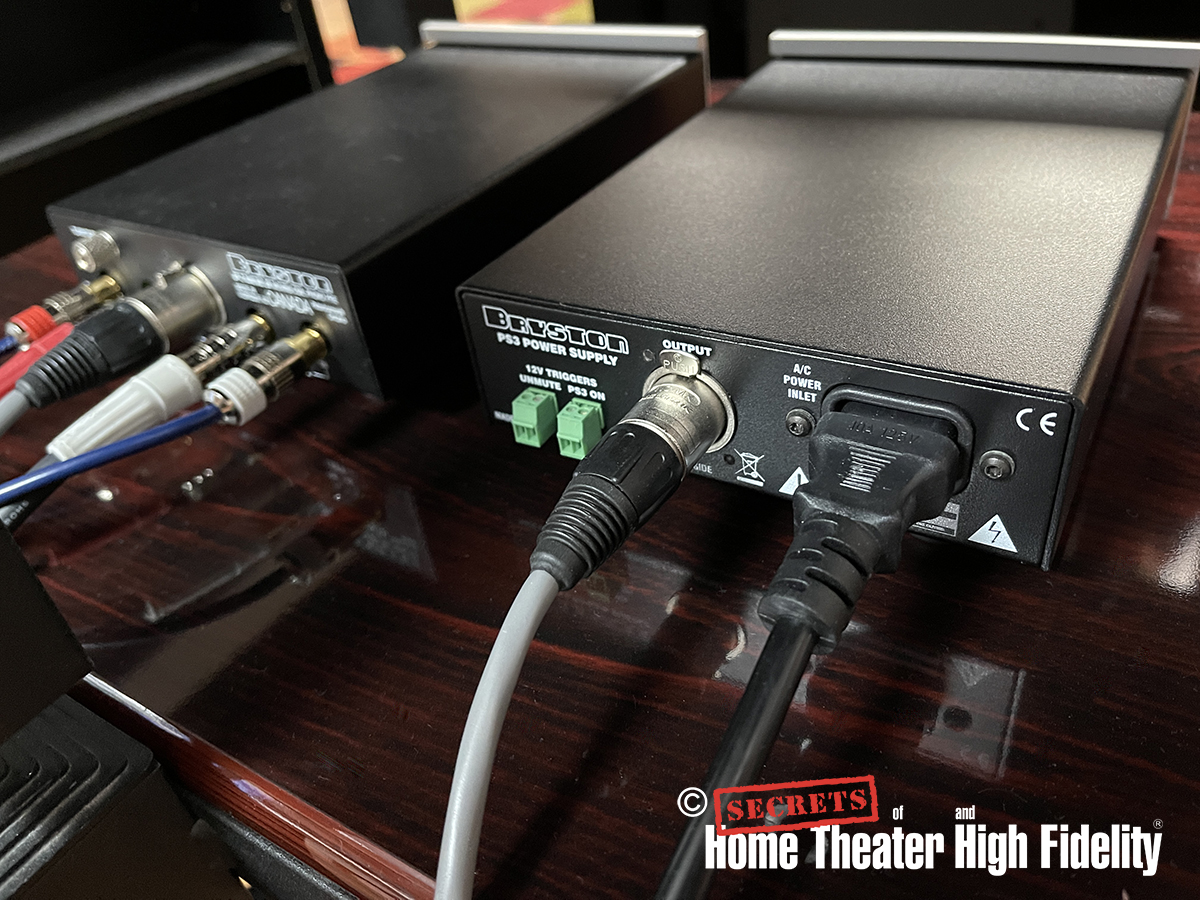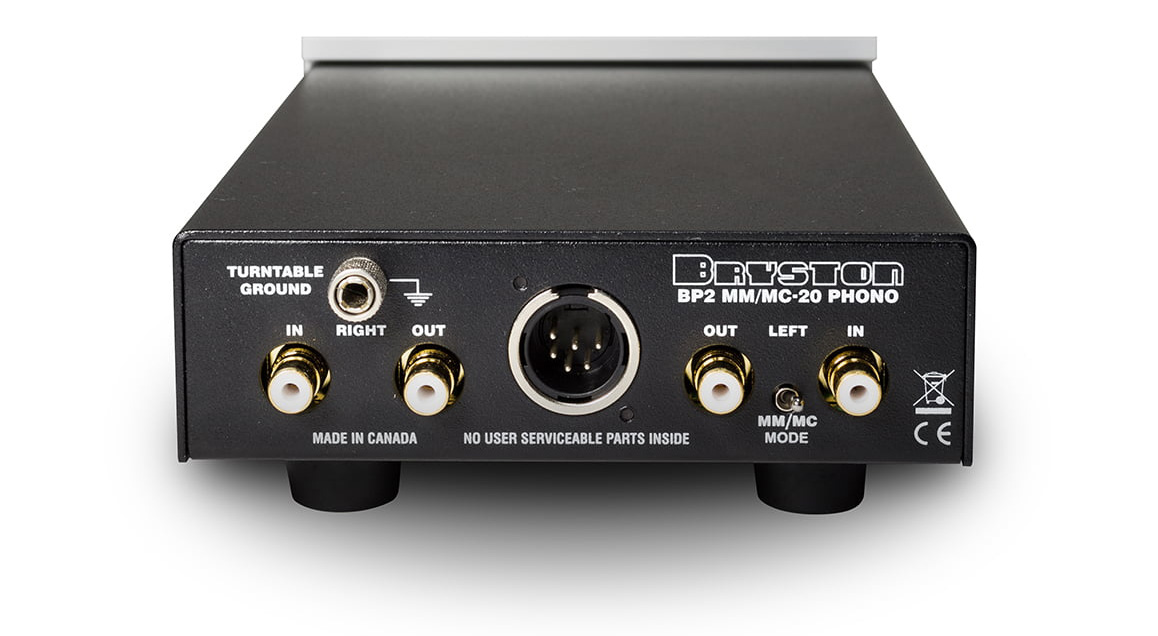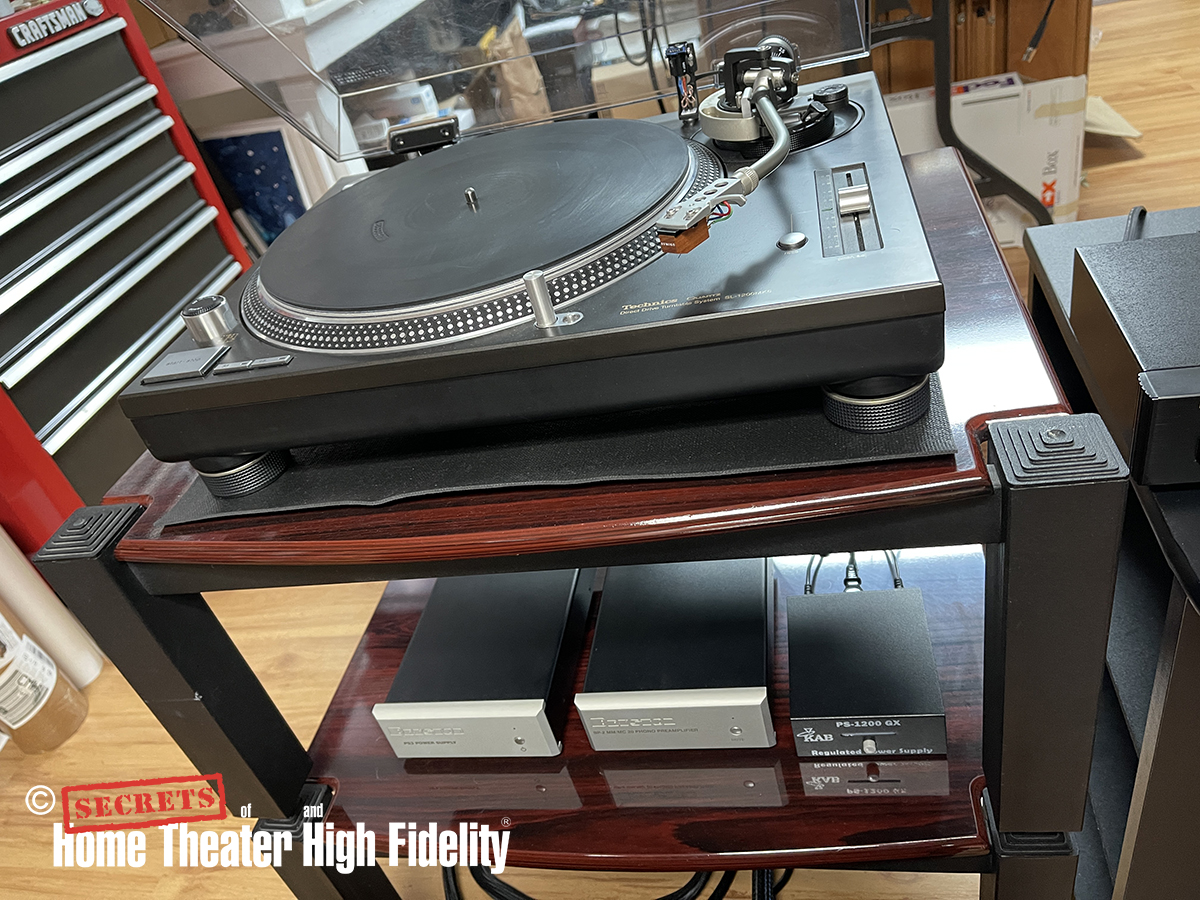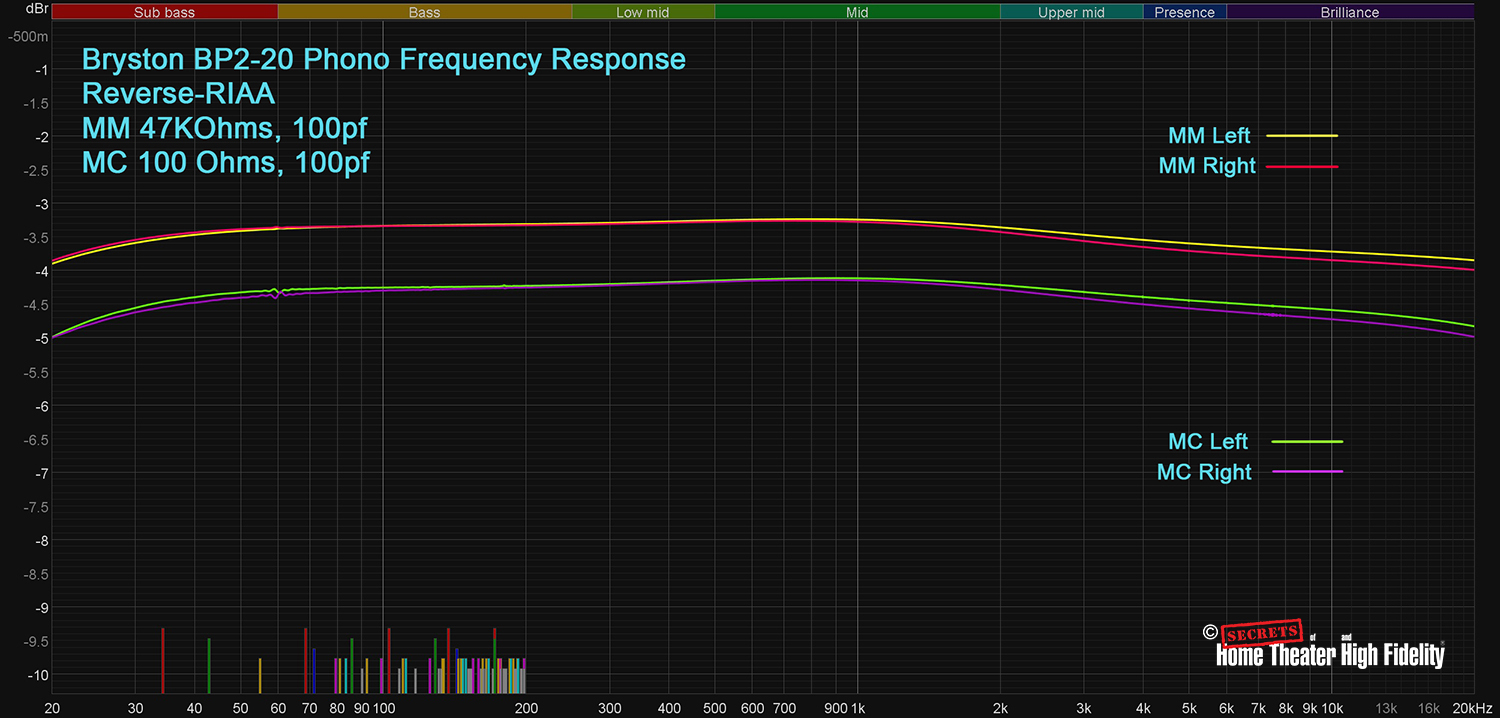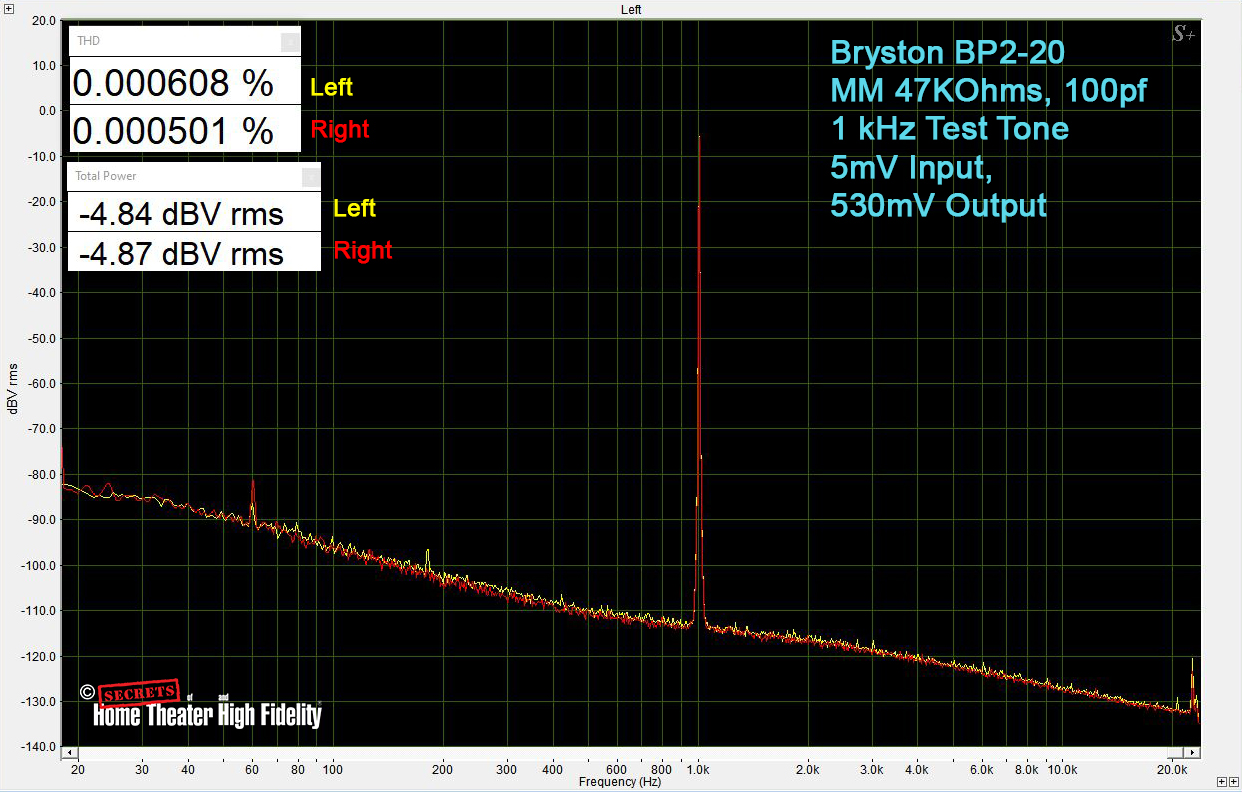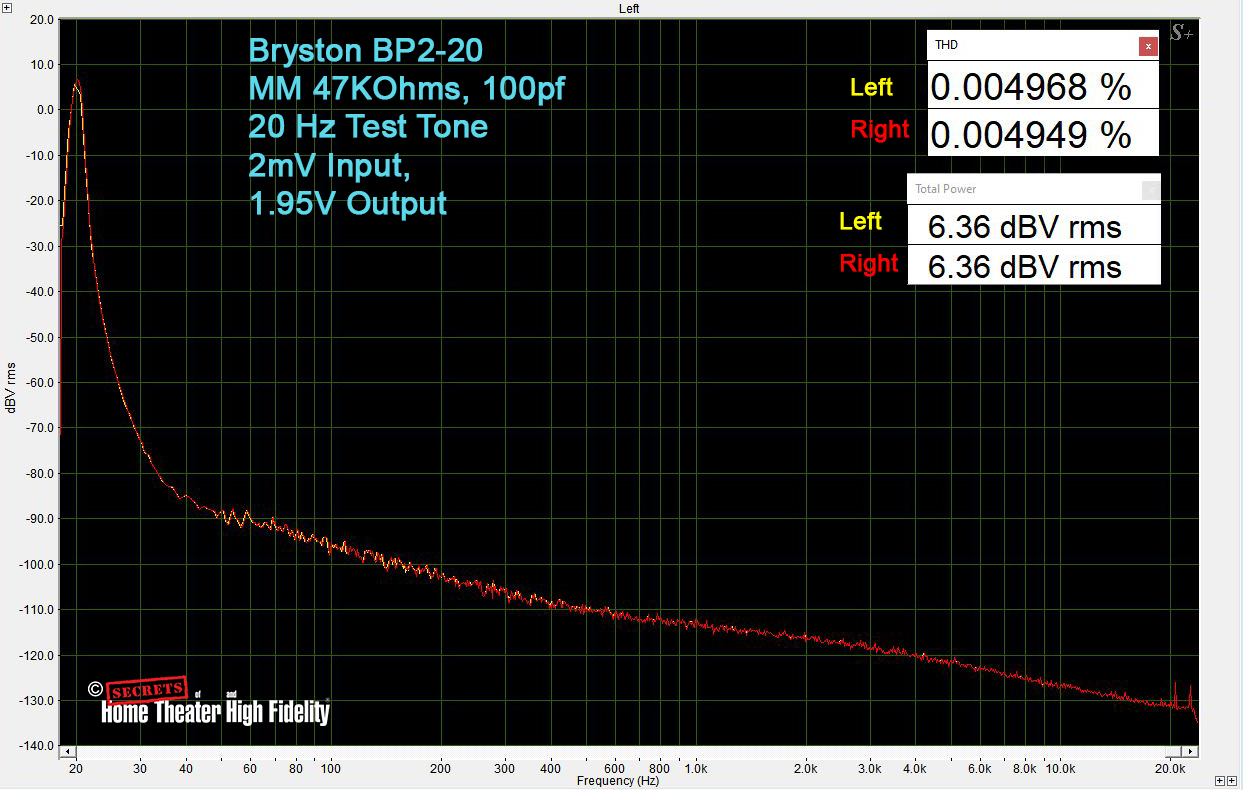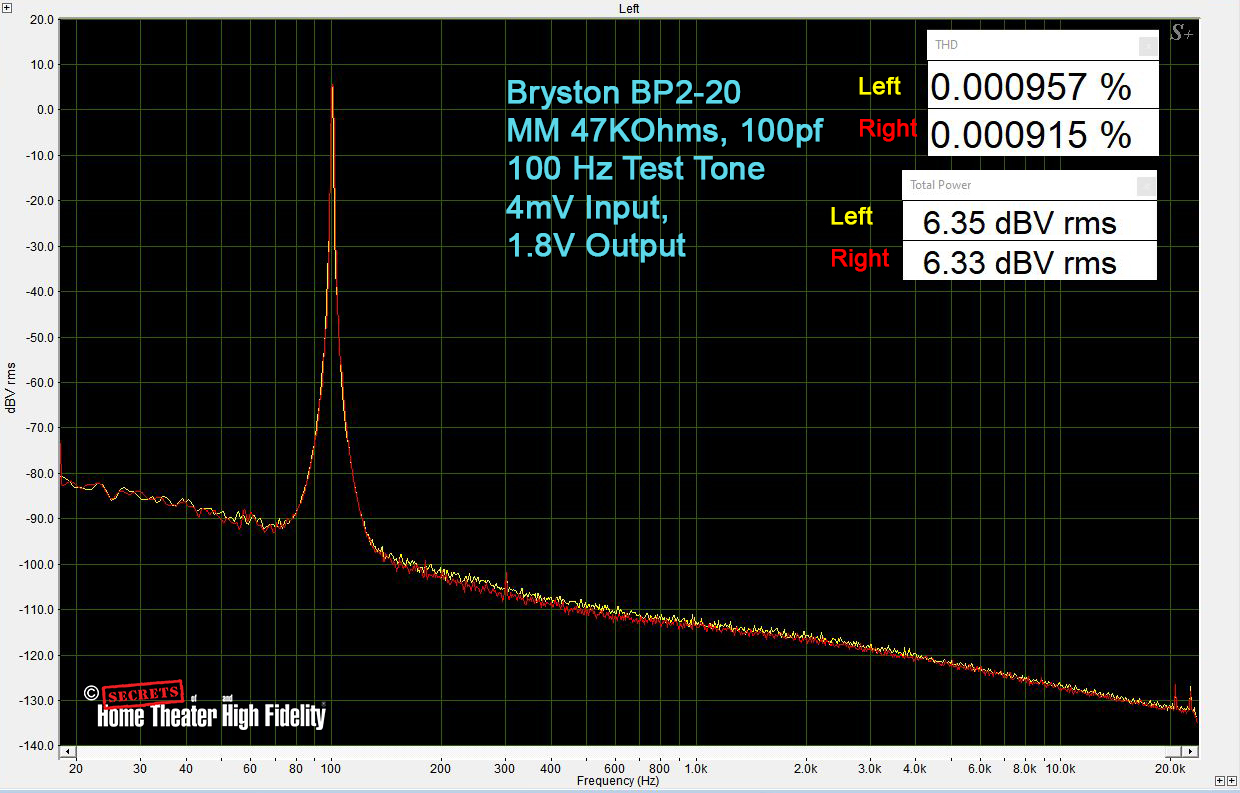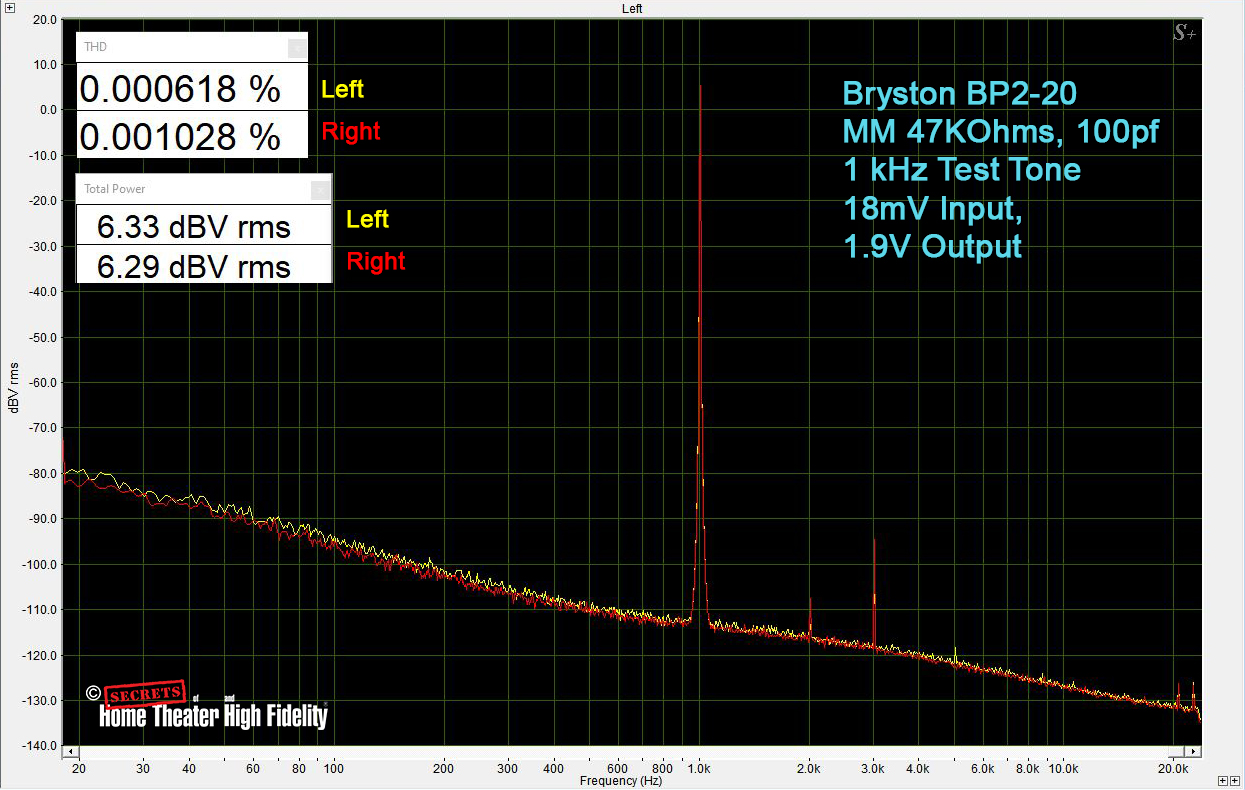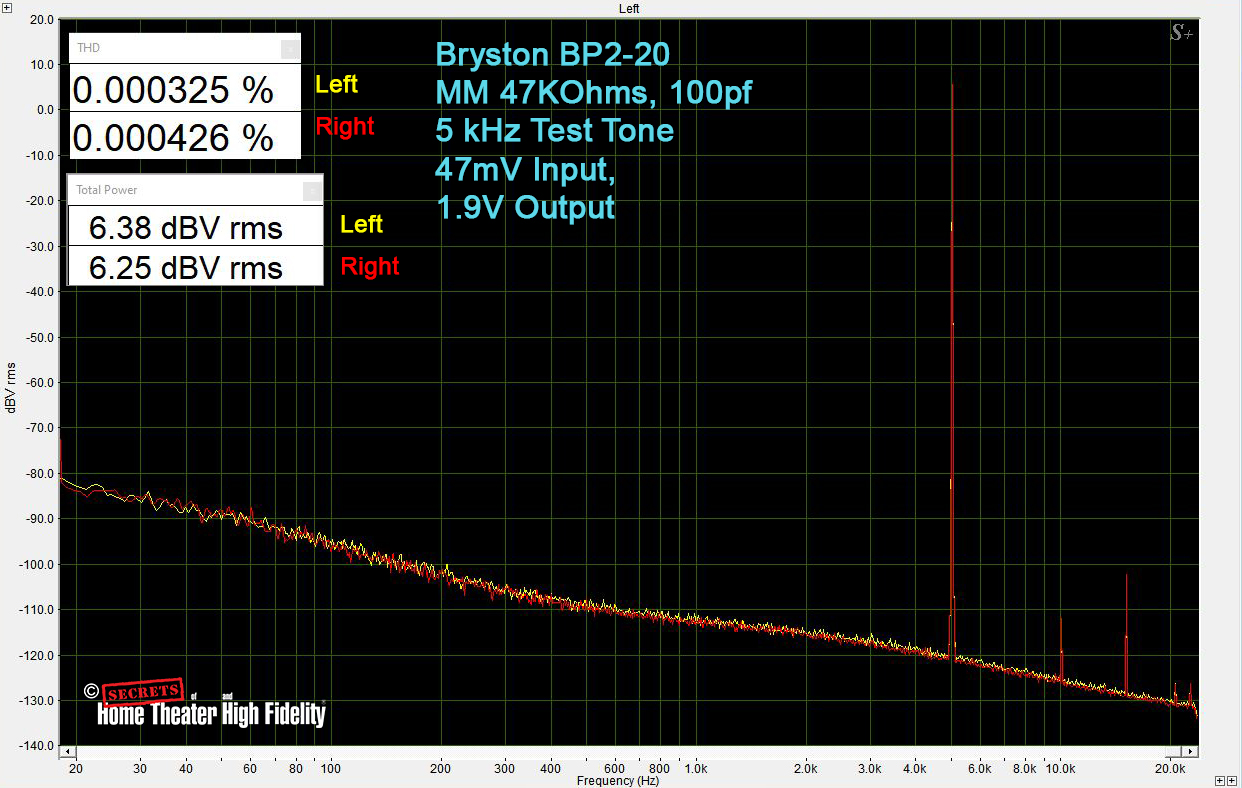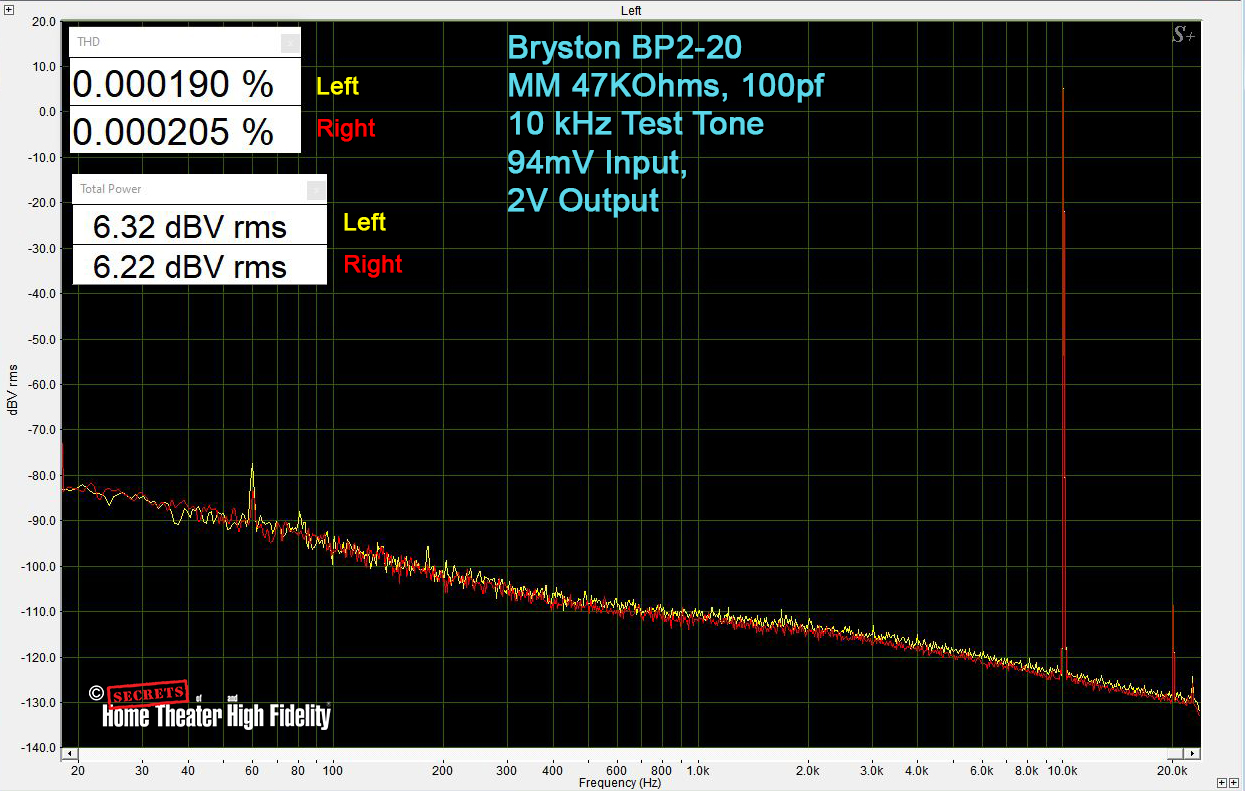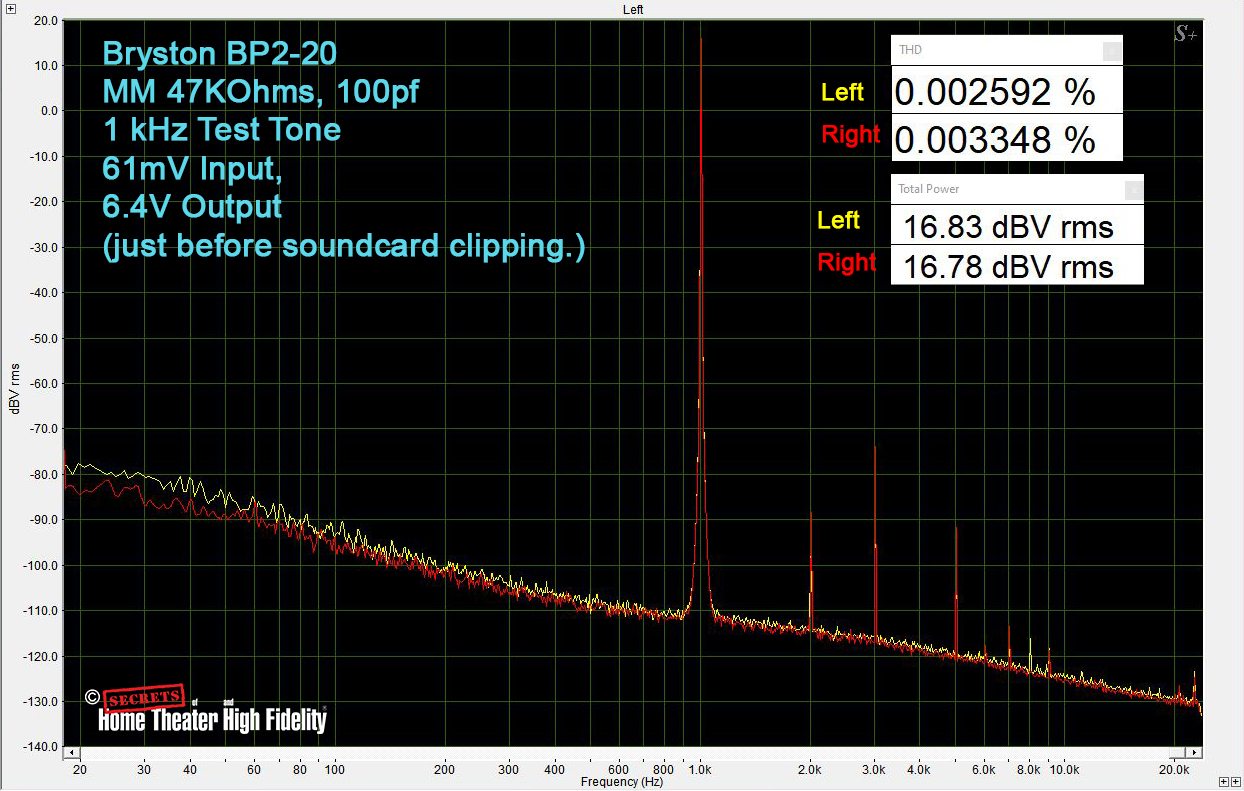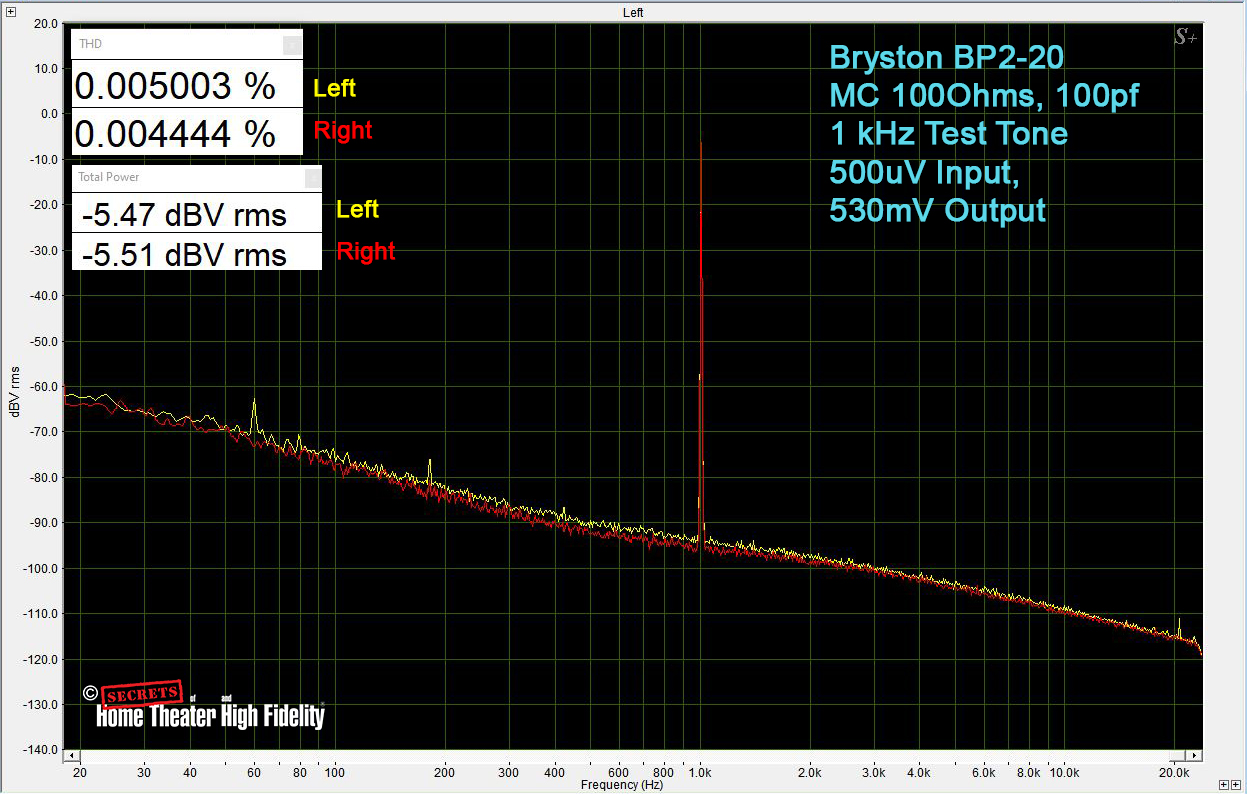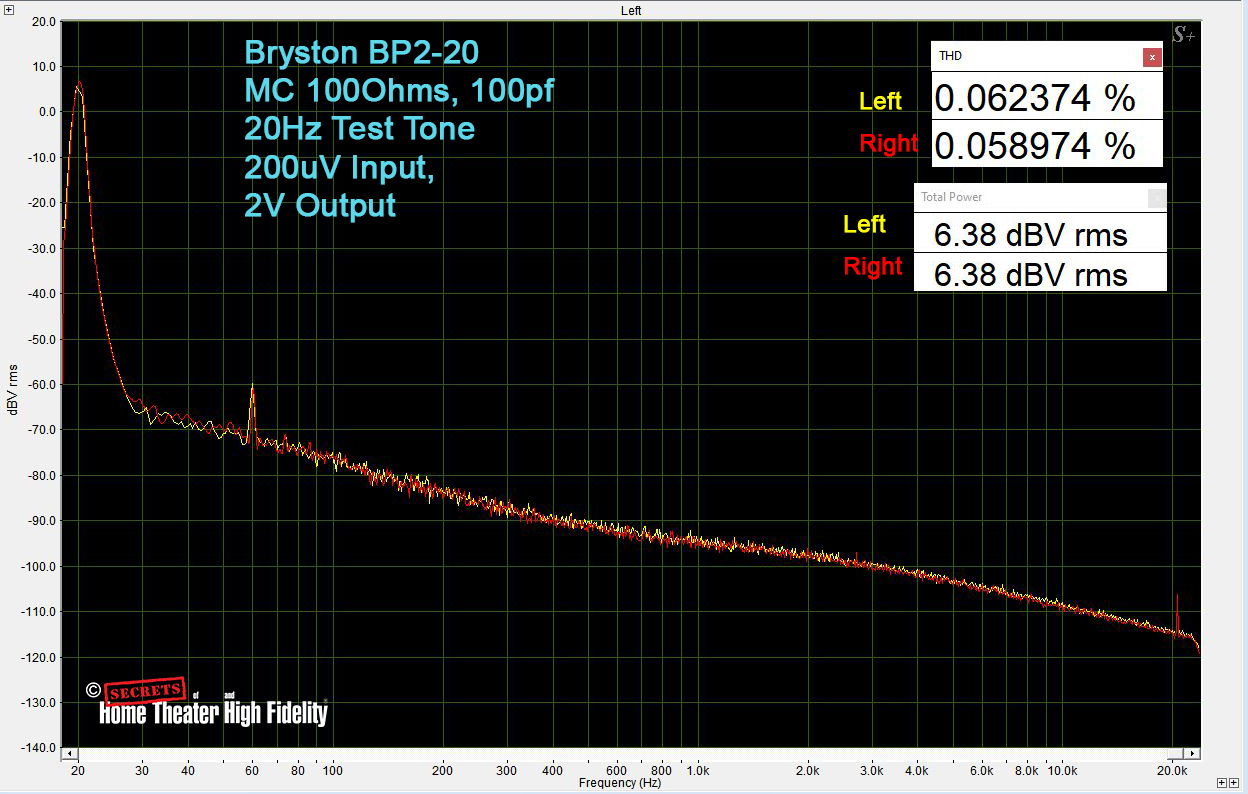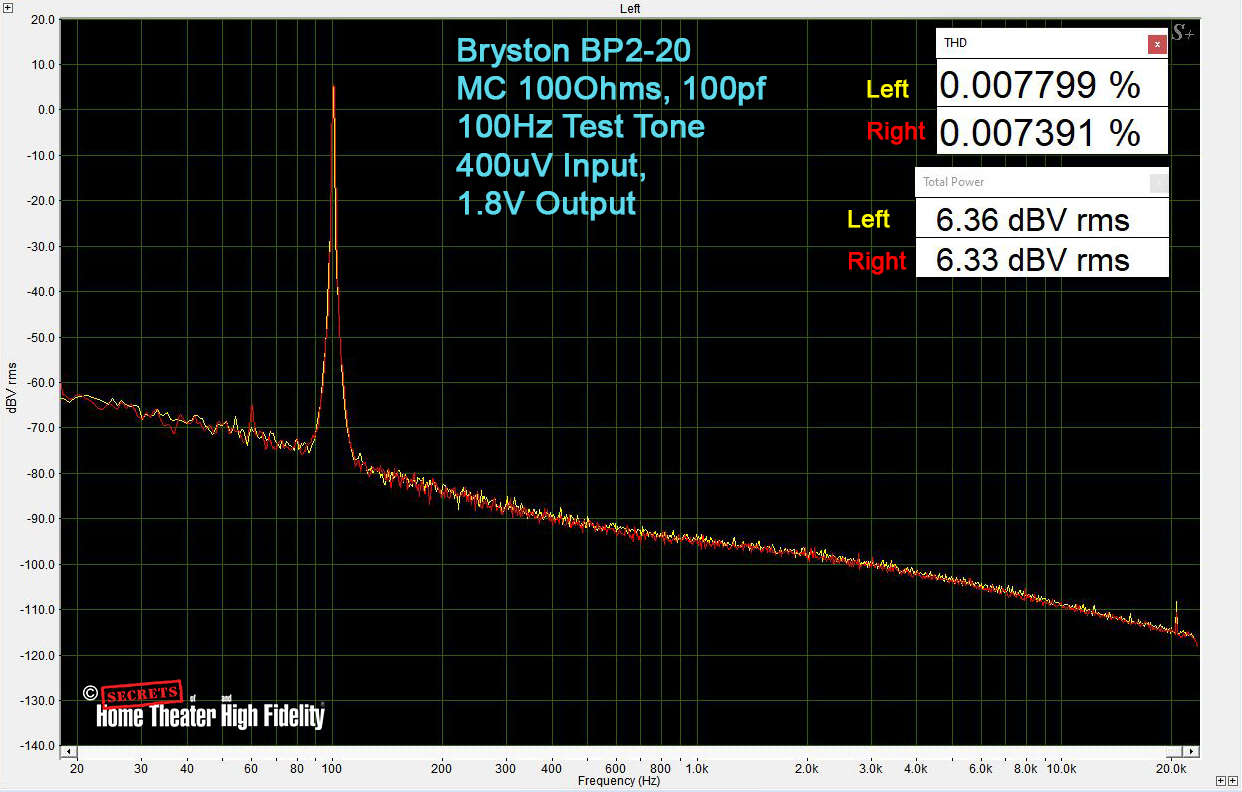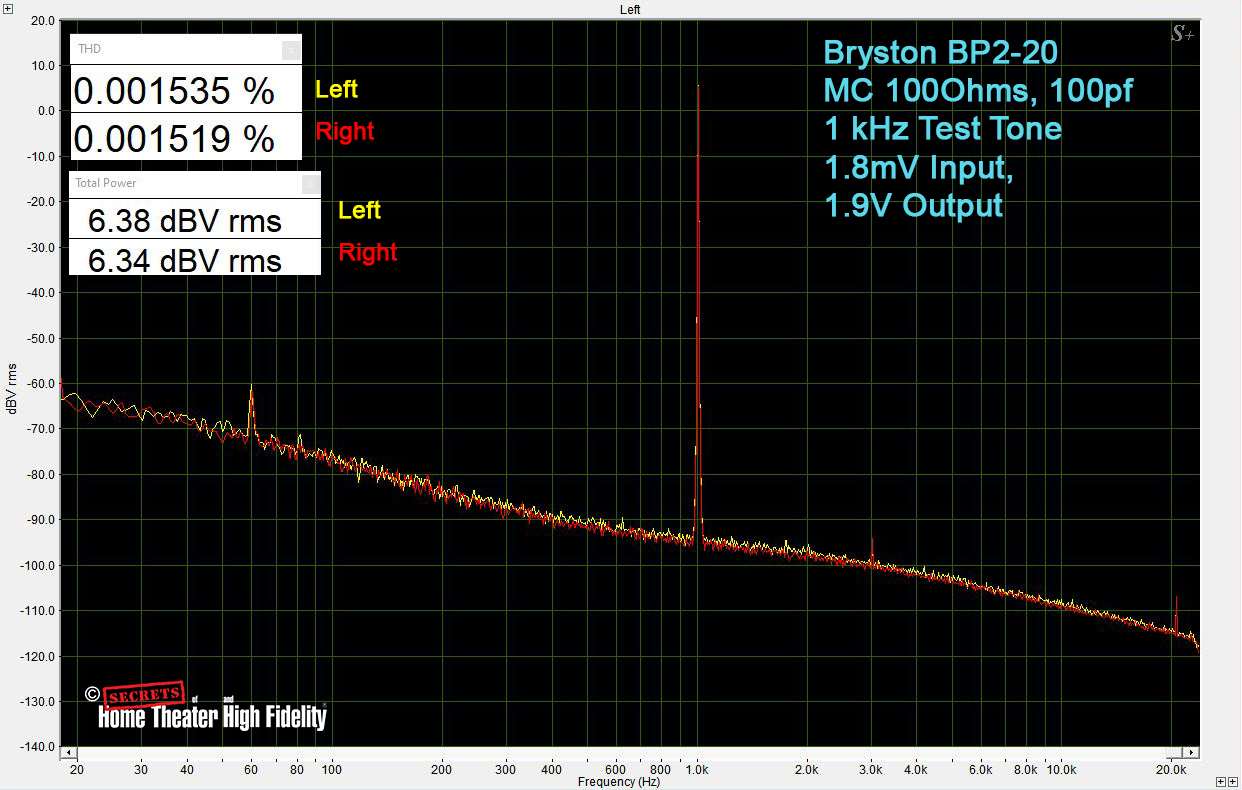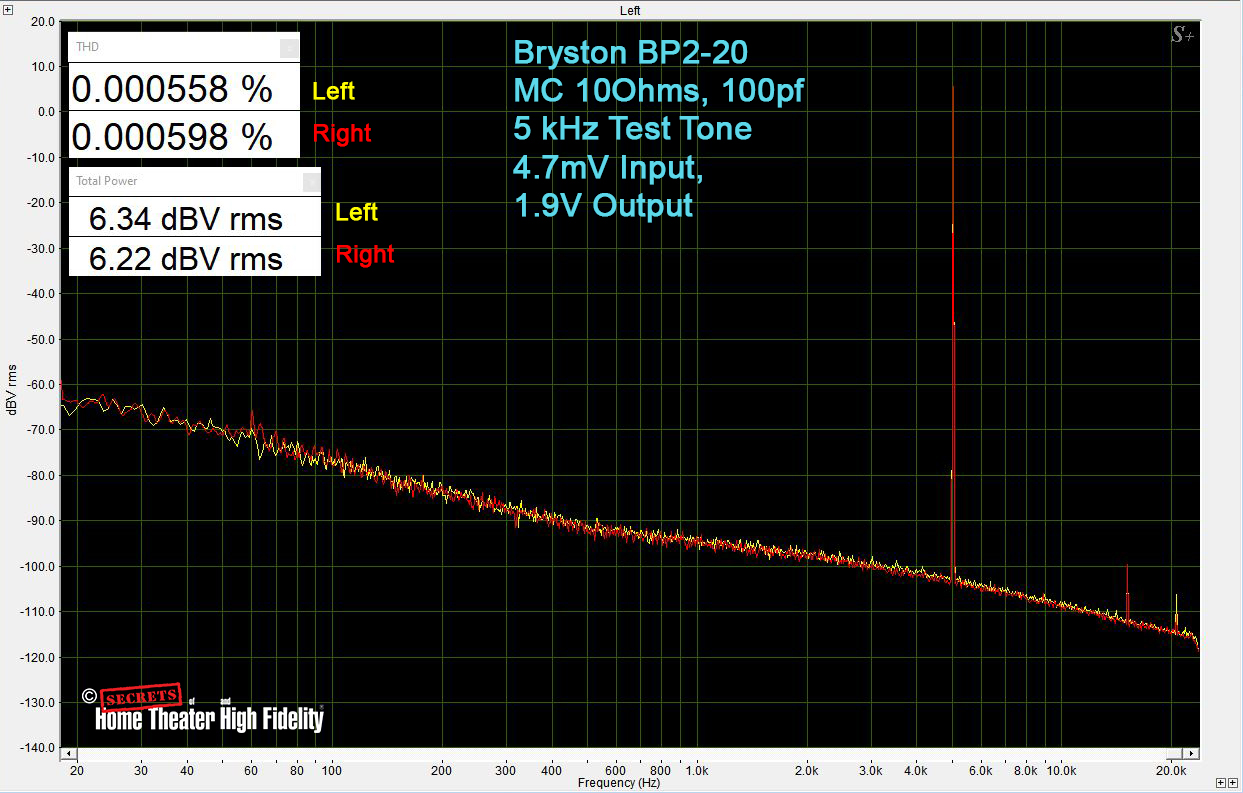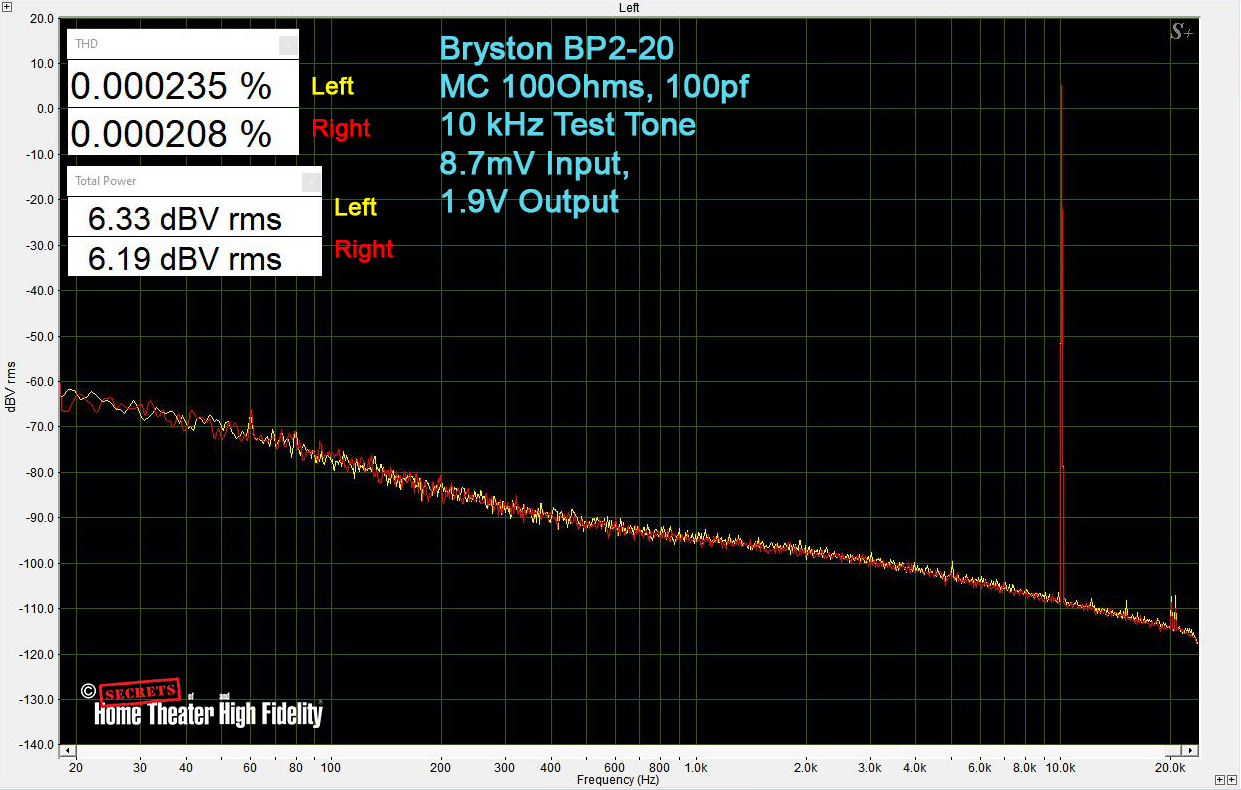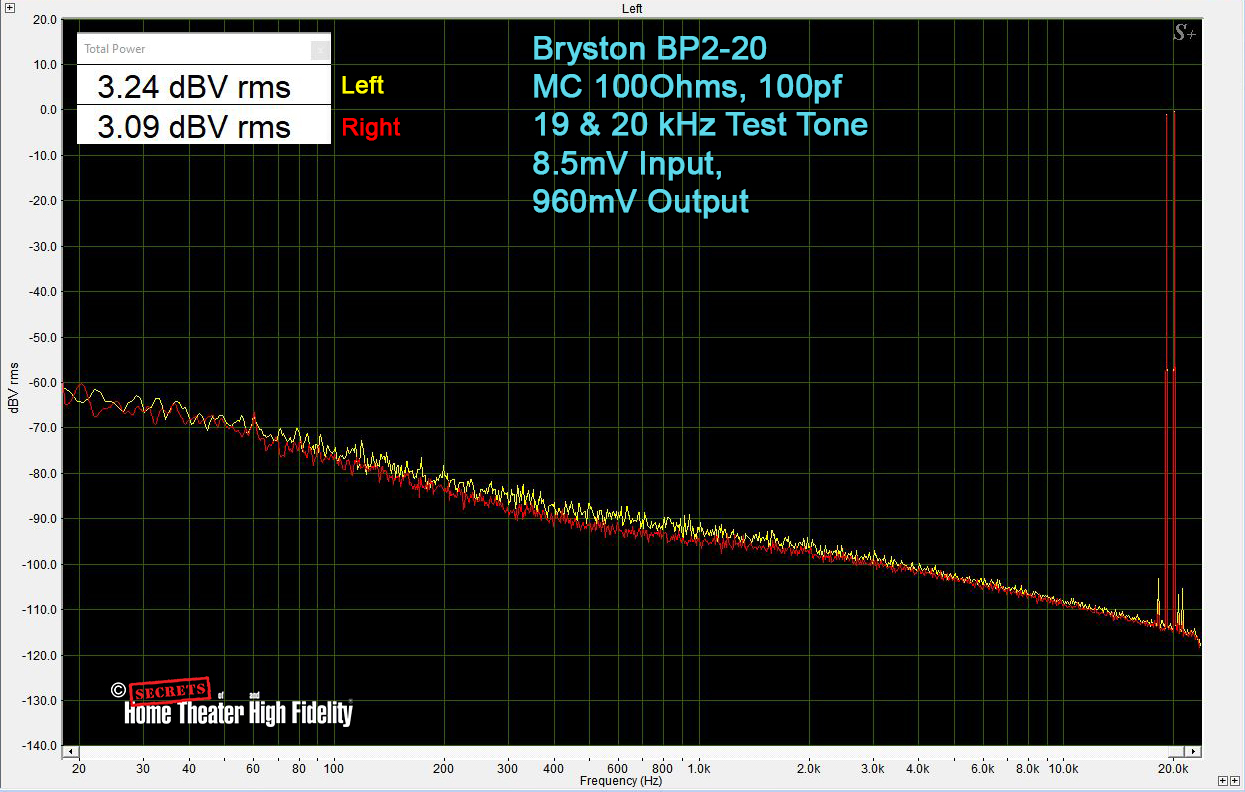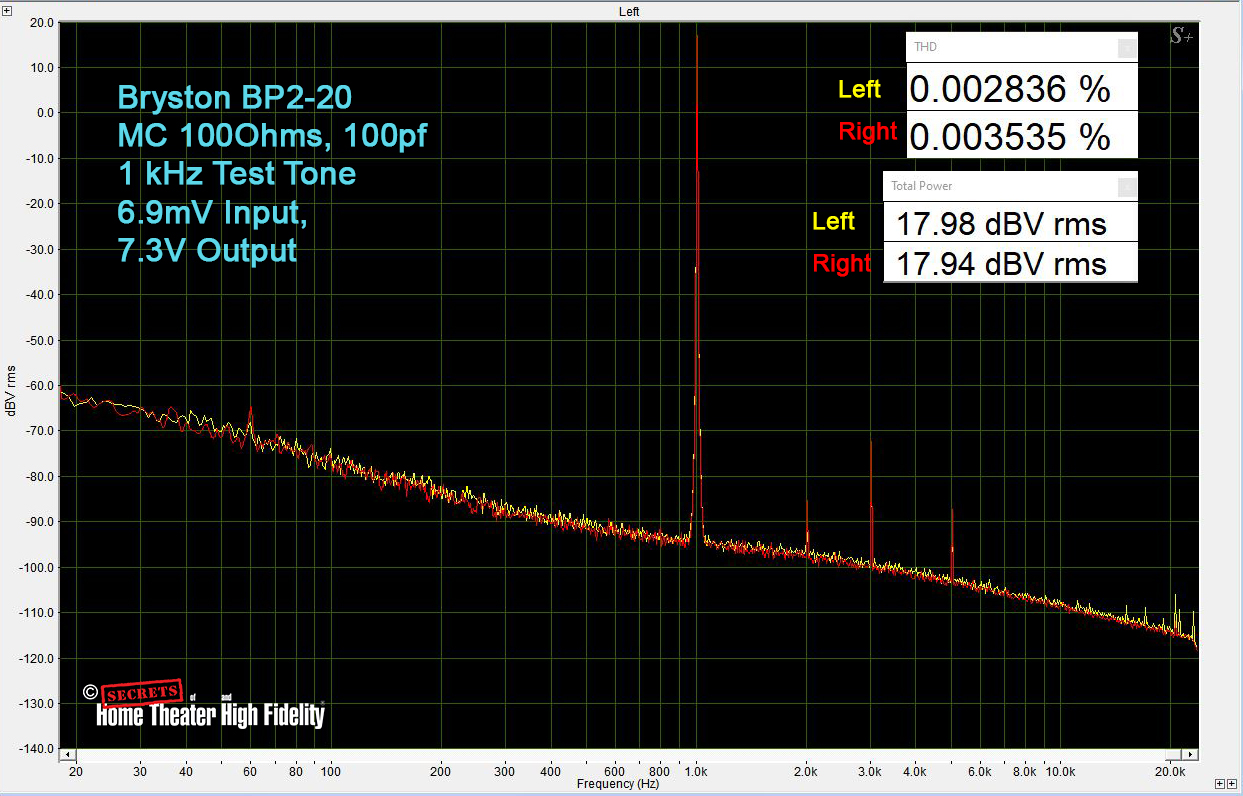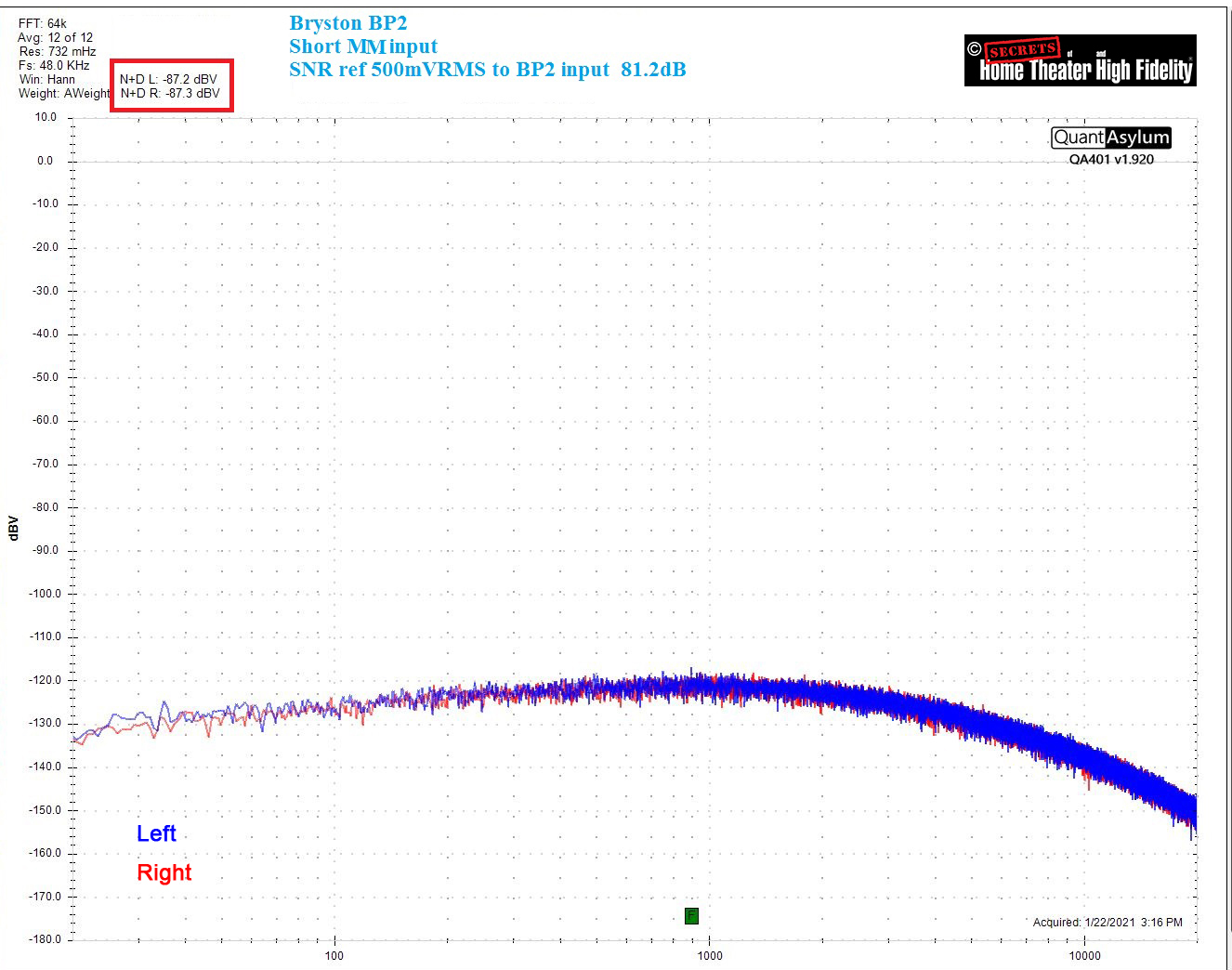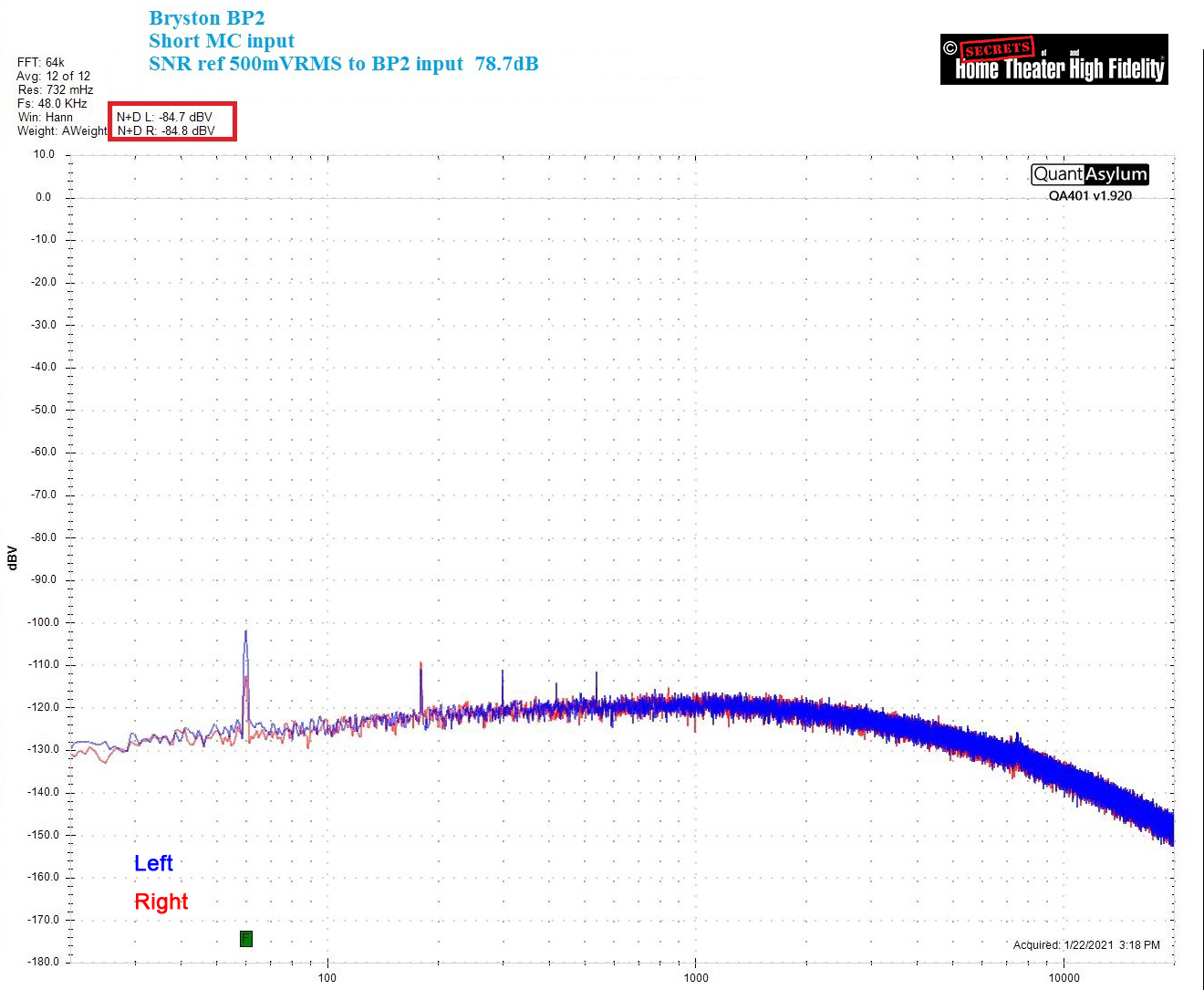Bryston is no stranger to phono preamps, having designed at least a couple of them over the years. Technical Editor David A. Rich notes, their first model in 1984 presented a mind-bending new way to improve almost every performance parameter from RIAA accuracy to distortion, to reduced interaction with the cartridge. We will go into detail in the measurements section and, for true geeks, greater depth in a sidebar. But as is normally the case with these Canadian masters of amplification, Bryston has taken their own notably understated approach to the rendering of phono with the BP2-20 MM/MC. If you are looking for an in-line tone control to dial-in your cartridges every which way from Sunday, then this is not the preamp for you. If you want an impeccably designed, non-tweakable, phono preamp that adheres to the RIAA standard and accepted MM and MC phono cartridge design, then say hello to my new little friend!
- Typical Bryston build quality, which is to say excellent.
- Separate power supply.
- One of the quietest phono preamps I have ever heard.
- MC20 has 41dB of gain for MM and 61 dB of gain (using a step-up transformer) for MC.
- Can be ordered with 71 dB of MC gain for very low output cartridges.
- Limited capacitance loading via internal jumpers.
Bryston is a long-standing Canadian audio company that needs almost no introduction. Their name has a hard-earned reputation for performance and quality that is the envy of many and yet it’s also a company almost devoid of marketing ego or bombast. Their electronics and speakers “do the talking” so to speak, and they do it very, very well. Although Bryston started life by building power amplifiers, they have had phono stages in their product line for quite some time. The Bryston BP2-20 MM/MC phono preamplifier that I have in for review is simple enough to look at and operate, but Bryston has designed it with the company’s latest take on its tried and tested two-stage phono pre-amplification strategy. The hallmarks of it are tight adherence to the RIAA EQ curve, extremely low distortion overall, and high levels of headroom to prevent any sort of overloading situation. All this is done and presented in an elegant and simple package devoid of the need or temptation of tweakery. There are very limited capacitance loading changes that can be made via internal jumpers but otherwise, Bryston eschews the idea of the phono stage acting as another type of tone control in the audio chain. To them, the BP2-20’s job is to sufficiently amplify the very tiny output signals of a phono cartridge, by several orders of magnitude, cleanly and completely to effectively be driven by the downstream components. Period.
Let’s see how they’ve done.
Design:
Solid State MM/MC phono preamplifier with 1:10 step-up transformers.
Gain:
MM – 41 dB, MC – 61 dB
THD+N:
<0.005% MM, <0.007% MC (Manufacturer)
Noise (A-Weighted):
-80dB ref. 5 mV input.
Equalization:
RIAA
Frequency Response:
20 Hz – 20 kHz (+/- 0.1 dB)
Adjustable Capacitance Loading Settings:
100 to 400 (pF) via internal jumpers.
Input Capacitance:
220 (pF)
Inputs:
1 pair RCA, 1 Grounding Lug
Outputs:
1 pair RCA
Dimensions (H x W x D):
2.7” x 5.7” x 8.25”
Weight:
3.8 lbs.
Warranty:
20 Years
MSRP:
$2100.00 (includes PS-3 power supply)
Website:
Company:
SECRETS Tags:
phono, preamp, riaa, Bryston, bp2, vinyl, Preamp Review 2021
The Bryston BP2-20 MM/MC phono preamplifier is one of the three current iterations of the phono stage that Bryston offers. The simple BP2 (with 41dB of gain) is suitable for MM and some high output MC cartridges and is strictly a solid-state affair. This BP2-20 and its sister, the BP2-30 add high-quality step-up transformers, increasing the stock gain level by an additional 20 or 30dB respectively, for the benefit of low-output MC cartridges. The internals of my review unit consist of said high-grade step-up transformers (one per channel) along with Bryston’s all discreet Class-A operational amplifiers, to ensure both plenty of headroom to avoid overloading and lots of current output to drive long cable runs if need be. The amplifier blocks are driven by +/- 24V mains, again to support the added headroom and resistance to overloading. So robust is the design that Bryston claims that it is impossible to overload this phono stage with any cartridge/LP combination that they are aware of.
Externally, the BP2-20 MM/MC phono preamplifier is made up of two separate components, the phono stage itself and the PS-3 power supply. Both components are joined by a short umbilical cord. The phono stage portion can be purchased on its own if the buyer already owns a Bryston MPS-2 Multi-Output Power Supply that can power multiple Bryston components.
The rear panel has a pair of RCA inputs and outputs and a stout grounding post for your turntable’s grounding wire. The MM/MC selector switch is located between the left input and output jacks. That switch location is one of the few little gripes that I have with the BP2-20. It’s a little hard to access and personally, I would have instead preferred a switch on the front panel for ease of use.
And while I usually like to see a low cut or rumble filter available on a phono stage, Bryston CEO James Tanner informed me that the BP2-20 has a built-in roll-off below 18 Hz which pretty much is the same thing without the need for a switch. As a matter of fact, according to Tanner, the lack of switches in this component is very much by design. Even the best switches can degrade over time and turn into resistive loads which is an undesirable variable to have in a phono stage. So, in short, while some phono preamps look at taking the “Swiss Army Knife” approach with settings galore, Bryston confidently hangs its hat on a simple, intelligent, and robust circuit design that focuses resolutely on a singular purpose.
During my review, the Bryston BP2-20 MM/MC phono preamp was used with my KAB modified Technics SL1200 MK 6 turntable and a Technics SL1500C turntable along with various Audio-Technica MM and MC cartridges, various Ortofon MM cartridges, a Shure M97xe with a JICO SAS stylus, and a Sumiko Celebration 40 MC cartridge. The rest of my audio chain consisted of the Benchmark Media HPA4 preamplifier, AHB2 power amplifier, Revel F228Be loudspeakers, and Paradigm Founders 120H speakers. All cables and speaker wires used are from Blue Jeans Cable.
The internal capacitance jumpers of the BP2-20 were set to 100 pF per channel, after taking the inherent capacitance of my tonearm wire and interconnects into account. This yielded the most consistently natural and appealing sound to my ears with the variety of cartridges that I had on hand.
Before getting into my sonic impressions of the BP2-20, I do want to outline one operational quirk that may or may not just be indicative of my setup. When I hooked up my SL1200 Mk6’s cables and grounding wire to the Bryston phono stage, as per normal, I got a pretty noticeable ground hum coming through my speakers. After some experimentation, I found that moving the turntable’s grounding wire from the BP2-20’s ground terminal to the grounding lug on my Panamax M5400-PM power center completely eliminated the hum. Conversely, I experienced no ground hum at all when hooking up the SL1500C turntable to the Bryston using its grounding terminal. The older SL1200 has a two-prong power plug while the relatively new SL1500C has a three-prong plug. Consulting with Bryston on the matter, they mentioned that some older turntables with two-prong power cords may exhibit the same ground noise issue I experienced but that even then, it’s a rather uncommon thing with the BP2-20. My SL1200 turntable is a Japanese market model with a custom power supply allowing it to run on US 120/60 AC power, so that also may be a factor.
From a sonic standpoint, the Bryston BP2-20 produced an extremely satisfying result when inserted into my system. The tonal balance was exceedingly neutral and revealing with just enough warmth tossed into the presentation to make any sort of vocal performance downright shine. Background noise was completely nonexistent with the BP2-20, whether using MM or MC cartridges. With the turntable and BP2-20 turned on, maxing out the volume dial on my preamp with nothing playing, elicited complete silence from my speakers. When I was ready for sound, I simply cued up a record and nothing but beautiful, full, lush music poured out. No muss, no fuss, no guesswork.
Vinyl records are an inherently flawed format. At it’s very basic you are dealing with a stick with a nail on the end of it being jammed into a plastic groove (just so) to read the ridges from left to right and up and down. The stick’s mechanical movements are converted to tiny electrical signals that must be amplified by a ridiculous amount to get a strong enough signal for your electronics to work with so they can convert that signal to the music you hear. Remember as well that vinyl requires the use of a substantial EQ curve to encode and decode what’s in those grooves because the format isn’t suited to deal with both extremes of the human hearing range without help. Add to that, additional variables like the shape of the nail tip, the material the stick is made from, how it’s suspended, the design of the magnet structure, the electrical characteristics of the wiring in your tonearm to the load settings on your phono preamp, etc. You get where I’m going with this? There are so many variables to vinyl playback that will ultimately affect/alter/improve/degrade the sound that we hear that it’s amazing that many of us have the fetish for it that we do. And yet here I am, a child of the CD area. Resolutely convinced time and again of the superior fidelity of digital over vinyl. Yet I love listening to my turntable. Not more than digital, but along with it. There is something slightly magical about a well-recorded and produced LP that is played back on a system where everything just “clicks.” Over my review period, I have found the Bryston BP2-20 to be a vital lynchpin in the synergistic alchemy of my music system, allowing me to enjoy my ever-growing record collection with increased relish.
I have, over my time with vinyl, developed a preference for Microridge (or Microline) tipped cartridges. Out of all the available stylus shapes, it is the one, I’ve found, that can mine the most information out of LP grooves and sound the most musical while doing it. The Bryston BP2-20’s sound was so clean and devoid of distortion that I was most easily able to hear those differences between Elliptical, Shibata, Line Contact, and Microridge styli when playing the same material. The Bryston more than held its own when compared to a phono stage benchmark such as the Pass Labs XP25 that I’ve had in residence for quite some time. The XP25 has always been superb with MC cartridges but it can be a bit finicky with MM carts requiring some tweaking of the loading dials to get things sounding just right. The Bryston required no such coddling. Everything sounded good with the flick of the slightly annoyingly located MC/MM switch at the back. And while we are on the subject of minor annoyances, I do wish that the BP2-20 would have come with a set of balanced outputs as well. That would be the only other feature that I would wish for.
A few of the more memorable musical selections that I experienced with the Bryston BP2-2- MM/MC:
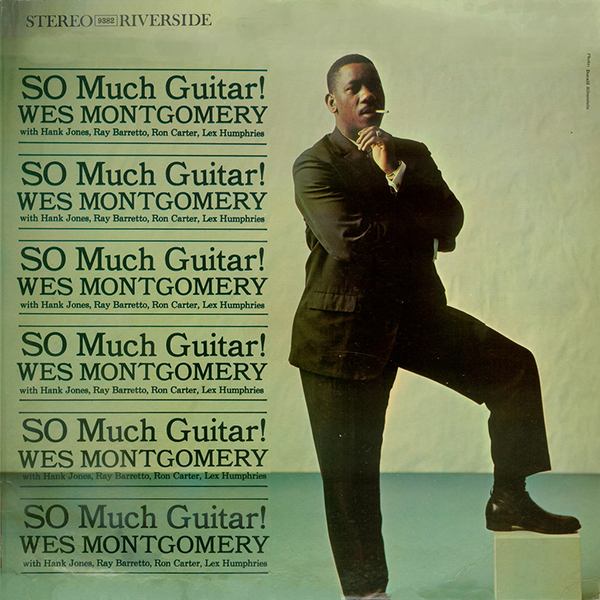
Wes Montgomery, SO Much Guitar!, Riverside, 1961
Using the Technics SL1500C with my Audio-Technica OC9ML/II in concert with the Bryston revealed all the dynamics and interplay between an absolutely smoking jazz quintet on “Twisted Blues”! The sonic results were very intimate as if I was sitting in on a jam session back in 1961. There was plenty of body and depth to the sound but crisp little details like the sheen off Lex Humphries cymbals or the tone and snap of the background congas just completed the highlights of the picture. Wes Montgomery’s guitar playing shone at its fulsome and melodic best, particularly on the track “I Wish I Knew.” I tried this album out with the Ortofon 2M Black MkII cartridge as well, and while it sounded fine with plenty of detail, I could detect a thinness to the sound, a similar lack of body that I’ve found with other Shibata tipped cartridges in the past. The Bryston BP2-20 made such comparisons very easy to hear.
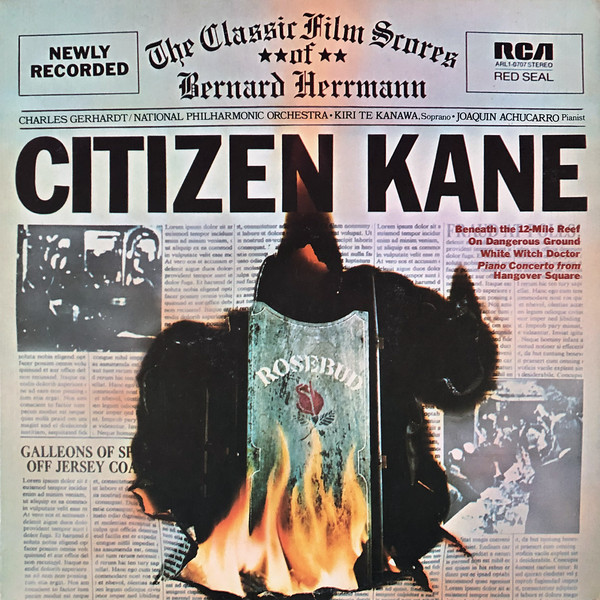
Charles Gerhardt/National Philharmonic Orchestra, Classic Film Scores of Bernard Herrmann, RCA Red Seal, 1974
A superbly recorded LP with some of the best and emotive film music ever committed to tape. I found that the best-sounding cartridge combination with the Bryston here was the Sumiko Celebration 40 MC on my SL1200 Mk6. The Bryston BP2-20 allowed the Microridge tipped Sumiko to work its aural magic and reveal a broad and lush orchestral soundstage with plenty of detail. The 9 full harps were rendered in their complete melodic splendor throughout the entire “Beneath the 12-Mile Reef” suite. Bass response during this same medley of songs was deep, solid, and never sloppy sounding. The Paradigm Founders 120H speakers had a little something to do with this too but the Bryston phono stage was doing a superb job amplifying those tiny little signals, courtesy of the Sumiko cartridge, into supremely usable material. Kiri Te Kanawa’s vocal performance in “Aria from Salammbo” was perfectly tangible right before me, sounding rich, powerful, and quite alive in my studio.
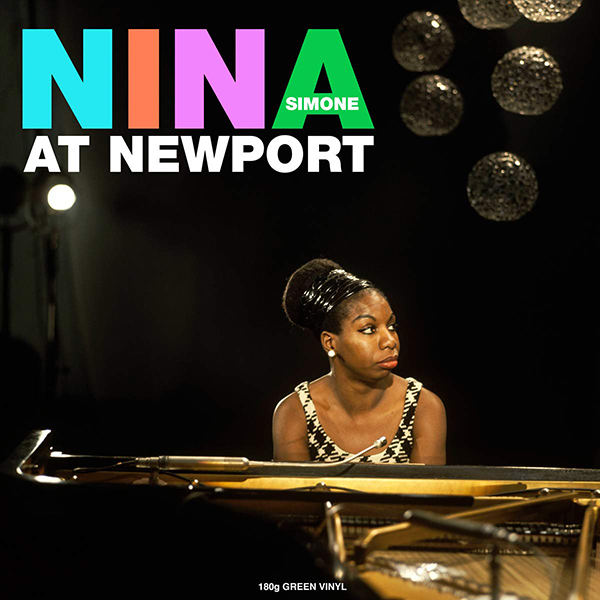
Nina Simone, Nina Simone at Newport, Not Now Music (originally Colpix Records), 2017 (1960)
A very nicely recorded live album that has a very intimate feel to it. The percussion-laden track “Flo Me La” has Nina Simone essentially singing a melodic chant accompanied with piano and all manner of drums, congas, and what have you. The Sumiko Celebration 40 again paired with the Bryston BP2-20 made for a rollicking performance with solid potent bass from the drums, great weight, and ring to the piano notes, and Simone’s voice was full and clear throughout the track. “In the Evening by the Moonlight” starts as an intimate solo vocal by Simone, the full character and expressiveness of her voice clearly coming across. But very quickly the song turns into an almost church revival in its intensity and style. The Bryston/Sumiko combo succeeded in making it a rich, fully enjoyable, and toe-tapping experience!
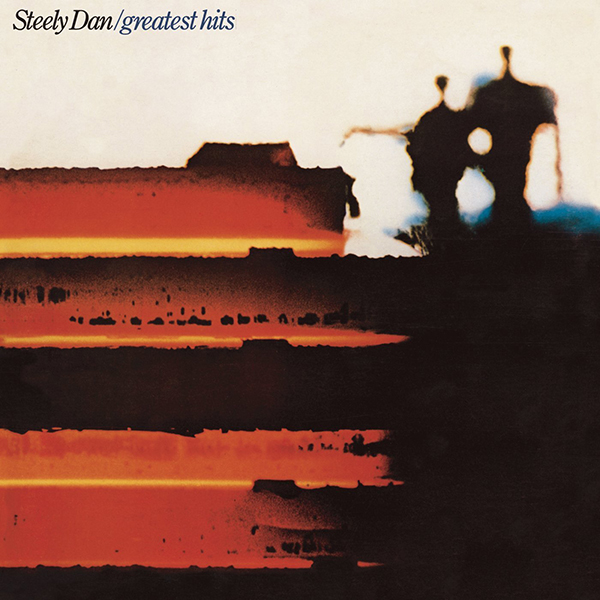
Steely Dan,Steely Dan’s Greatest Hits, MCA Records, 1980
For this double album, pairing my SL1200 MK 6 and a Shure M97xe cartridge with a JICO SAS stylus worked extremely well with the Bryston BP2-20. Steely Dan has always been one of my favorite bands, in no small part due to their musicianship, attention to fidelity, and wry lyrics. This greatest hits compilation is a good cross-section of the band’s output from their albums “Can’t Buy a Thrill” through to “Aja.” The Shure/JICO combo along with the Bryston elicited all the mellow slickness that is in “Here in the Western World” with just enough top-end bite to give the right edge to the piano notes and guitar solo. “Doctor Wu” was another track where the cartridge and phono stage pairing worked its magic to create a full yet clear soundstage with Donald Fagan’s vocals perfectly in the center and a potent sounding saxophone solo that had not a hint of distortion in it. The background percussion chimes sounded crystal clear and oh so sparkly too! Dean Parks’ Talk Box guitar solo on “Haitian Divorce” is a favorite of mine and sounded especially detailed here.
Bench Tests by Carlo Lo Raso, Analysis by David Rich, and Carlo Lo Raso.
Distortion tests were conducted using custom test tones generated by Room EQ Wizard’s signal generator on my Surface 3 PRO tablet connected to a Topping D10s USB to SPDIF converter. These were fed through the Bryston and measured by a Lynx 2B professional computer sound card in my main workstation. Results were analyzed using SpectraPlus audio measurement software. SNR measurements were conducted using a QuantAsylum QA401 analyzer and its accompanying software.
Here are the RIAA tracking results of both the MM and MC phono stages in the BP2-20. Both seem to show up to a 0.1 dB difference between the L and R channels. Note that to perform these measurements we are using a passive inverse RIAA board which introduces about +/- 0.3 dB error from the tolerances of the resistors and capacitors. The frequency response shown is almost certainly a reproduction of the errors of our inverse RIAA board.
David A. Rich notes: These curves are created using the frequency response plotting tool in REW. We use the same signal that it produces to test speakers. It is not the typical method of stepping a sine wave generator up in frequency and taking an amplitude measurement at each point, but I have found REW and similar CAD tools to be very useful and accurate tools for this. It’s an option I have used for close to 30 years. It is better and much faster than the QuantAsylum for this function. An AP also uses the stepped sine wave method but does it in the analog domain making the process much faster.
In the Bryston, the RIAA equalization is done in two stages. The first stage does the eq from 20Hz to 1kHz and the 2nd stage does the eq from 1kHz to beyond 20kHz. The two-stage design places one capacitor in each stage. No interaction between reactive components occurs since they are isolated in each stage and not together in a complex network required in a single-stage design.
The resistors used in the passive networks set the RIAA at 1% for the resistors and 1% for the capacitors, done by measurement at the factory.
The following are THD measurements from the MM input. It should be noted that in many of our THD tests (for both MM and MC) we kept the output level approximately constant at 2.0VRMS. This is the level used as a reference when we test line-level analog electronics, DAC, or ADC channels with a single-ended RCA output
Here are the THD results at 1 kHz for an output of 530mVrms. The distortion is a very small 0.0006% but this is not distortion just noise. There is a tiny power line spur at 60Hz and an even smaller harmonic at 180Hz. The noise profile is not flat but reflects the inverse RIAA curve that the preamp is implementing. At low frequencies, the noise is high enough to hide the very small distortion the Bryston produces.
David A. Rich notes: The 530mVRMS output gives a gain of 40.5dB (106-absolute gain) relative to the 5mVRMS input we applied, which is an insignificant difference from the spec of 41dB (112) gain at 1kHz.
Here are the THD results at 20 Hz for an output of 1.9VRMS. The THD is 0.005%. Again, not a harmonic to be seen.
David A. Rich notes: The RIAA curve is not flat. At 20Hz the gain is up by 19.3dB which is an added gain of 9.2. At 1kHz the preamp produces a gain of 40.5dB (106) as discussed in the last figure. The total gain at 20Hz is 59.8dB (970). The capacitors and resistors in the RIAA network are in a feedback loop which sets the gain. When the feedback loop brings the gain up it is doing so by reducing the amount of closed-loop feedback. Less feedback could result in more distortion. It’s not happening here because of the extremely linear Bryston discrete gain blocks and the associated +/- 24VRMS supply rails which provide huge headroom relative to a 2VRMS signal.
We are also not seeing distortion because the RIAA is divided into two stages (see sidebar). For the 1kHz test above, each stage provided an absolute gain of 10 (20dB) for a total of 100 (40dB). For 20Hz the first stage supplies an absolute gain of 92 and the second stage remains at a gain of 10.
The spectra show not a single spur. We see no distortion at all. The THD reported is just from the noise floor which has been pushed up by the RIAA eq curve.
When working with large gains and small signal levels it is hard to get the output to exactly 2.0VRMS. We applied an input level of 2mVRMS and got an output of 1.9VRMS. The preamp was providing a level of gain close to ideal at 950 (59.5dB).
These are the THD results at 100 Hz for an output of 1.8VRMS. The distortion is 0.001%.
David A. Rich notes: Again, we have no distortion just noise. At 100Hz the gain from the first stage moves down from 97 to 45. The second stage is constant. The input level had to be increased to 4mVRMS is produce the output of 1.8VRMS. The absolute gain is 450 which is the exact number expected from the gain reduction.
THD Results at 1 kHz for an output of 1.9VRMS. The worst-case THD is still nice and low at 0.001%.
David A. Rich notes: At 1kHz the gain of the first stage has come down to an absolute gain of 10 matching the gain of the second stage. 18mVRMS in produced 1.9VRMS out which at 104 is within the experimental error for the 5mVRMS test above which gave us 106. (About a gain of 10 from the first stage and 10 from the second stage).
We can see a little distortion in the spectra not because the distortion of the electronics has increased but the noise floor has come down. The noise at 2kHz (2nd harmonic of 1kHz) is much smaller than 200Hz (2nd harmonic of 100Hz).
The noise moves down as the RIAA gain moves down. If this was a flat line amp the noise would be approximately flat.
THD Results at 5 kHz with an output of 1.9VRMS. Worst-case THD clocks in at 0.0004%.
David A. Rich notes: At 5kHz the gain of the RIAA stage reduces relative to 1kHz. It is the 2nd stage that changes level above 1kHz with the first stage staying at 10. The gain drops from 10 to 3.9. We see a very small 2nd and 3rd harmonic. Again, it is not that the distortion is higher but that the noise floor is much lower at 10kHz (2nd harmonic).
With the lower gain of the RIAA curve, 47mVRMS was applied to get 1.9VRMS out.
THD Results at 10 kHz with an output of 2.0VRMS. Worst-case THD clocks in at 0.0002%.
David A. Rich notes: At 10kHz the gain of the 2nd stage is down to an absolute gain of 2. Combined with the first stage the overall absolute gain is 20. The gain is down from 970. The input level was increased to 94mVRMS to produce 2VRMS out. The tiny 2nd harmonic at 20kHz is again only visible because the noise under it has declined. With only one harmonic in the audio band at 20KHz, the minuscule distortion at 5kHz drops since we have only one spur left.
Here are the THD results at 10 kHz with an output of 4.2VRMS. THD remains impressively low at 0.0003%. There is a small power line spur in the left channel at 60 Hz and a harmonic of the test signal at 20 kHz at 110dB below the fundamental.
Here are the results for the 19 and 20 kHz test tones with an output of 0.97VRMS. The small IM products are seen at 18kHz and 20kHz.
Here are the THD results at 1 kHz with an output of 6.4VRMS. The worst-case THD is at 0.003% and the Bryston still has headroom to spare while being just below the input limit of the Lynx soundcard.
David A. Rich notes: The Lynx clipping level is set slightly above the maximum used in professional studios (7.75VRMS XLR/20dBU). A modern preamp with digitally controlled volume controls is likely to clip well below this level.
With +/-24VRMS supply rails, the Bryston should clip above 14VRMS at its output.
Audiophiles have long worried about the RIAA clipping with huge grooves cut in vinyl. We decided to see how high of a level we could get from our test LPs. The maximum we could get was by using the +18dB, 400Hz groove on the CBS STR 112 test LP with the record played at 45RPM.
With that extreme test track, the output was about 1VRMS with the Audio Technica VM540ML cartridge model. The spectra of the cartridge showed very high distortion with the stylus just holding on, so our test was at the limit of what vinyl can do. This cartridge has an output of 4mVRMS at 1kHz using an LP cut at standard recording level. Douglas Self in his text “Electronics for Vinyl” reports the vast majority of cartridges designed for music (not DJ use) have a maximum of 6.5mVRMS with one outlier at 8mVRMS. Even with that 8mVRMS cartridge on the table, our worst-case test would produce a level of 2VRMS.
The Self text goes into significantly more detail on cartridge output level and clipping than our test (see pages 99 – 104). None of his worst-case cartridge output levels would clip the Bryston.
Some audiophiles worry about the recovery of an RIAA phono stage in overload from a record scratch. With the Bryston, the worry should be the recovery of the line stage which is another way of saying it’s just not an issue with the Bryston given its true clipping level exceeds anything that could be on a new recording or even a worst-case, scratched up lawn sale find.
The following are THD measurements from the MC input.
These are the THD results at 1 kHz with an output of 530mVRMS. The worst-case THD is at 0.005%.
David A. Rich notes: The MC transformer supplies another gain of 10 (20dB) so the input signal level needs to be reduced by that value. Here the standard level of 500uVRMS was used as the input. The gain is 1060 (60.5dB). Matching the Bryston spec.
These are the THD results at 20 Hz with an output of 2.0VRMS. The worst-case THD is at 0.06%.
David A. Rich notes: The next 5 spectra follow the same method we used to test MM distortion with a target of 2VRMS out. The input levels were reduced by a factor of 10. For 20Hz the level was 200uVRMS.
In a typical MM RIAA stage, the electronics would produce an extra gain of 10. That would require more gain from a single stage or an added MC pre-preamp. Both approaches would add distortion and in most cases noise.
With the transformer Bryston uses here, we do not see any increase in distortion in any of the spectra we took of the MC stage.
These are the THD results at 100 Hz. Using an input level of 400uVRMS results in an output of 1.8VRMS and the worst-case THD is at 0.008%.
These are the THD results at 1 kHz. Using an input level of 1.8mVRMS results in an output of 1.9VRMS. The worst-case THD is at 0.002%.
These are the THD results at 5 kHz. Using an input level of 4.7mVRMS results in an output of 1.9VRMS. The worst-case THD is at 0.0006%.
David A. Rich notes: This is the first time we are seeing any distortion with the transformer in the loop.
These are the THD results at 10 kHz Using an input level of 8.7mVRMS results in an output of 1.9VRMS. The worst-case THD is at 0.0002%.
David A. Rich notes: Again, the tiny level of distortion goes down since we have only one in-band spur at 20kHz. While we did not investigate past 10kHz, the Bryston’s two-stage design allows the preamp to follow the RIAA curve into the ultrasonic region. One stage designs have reduced gain in the ultrasonic region.
Here are the results for the 19 and 20 kHz test tones with an output of 960mVRMS. The THD cannot be accurately read by our equipment at this level.
Here are the THD results at 1 kHz with an output of 7.3VRMS. The worst-case THD is at 0.004% and the Bryston still has headroom to spare while being at the input limit of the Lynx soundcard.
David A. Rich notes: One thing we are not testing yet is the interaction between the cartridge model, the capacitive loading, resistive loading, and the input of the phono preamp past the selectable load components. The input impedance of the phono stage (after the loading passive capacitor) should be very high and constant, so it does not interact with the cartridge. This was first reported in a paper by Tomlinson Holman “New Factors in Phonograph Preamplifier Design” It is an open access AES download.
The Bryston two-stage architecture with the stage that connects to the cartridge having a gain change of only a factor of 10 compared to 100 for a single-stage design. The maximum gain of the Bryston first stage is 100 compared to 1000 for a single-stage design. The non-inverting feedback configuration of the Bryston presents a very high input impedance. With minimal change as the gain moves from its highest value at 20Hz to its lowest value at 1kHz. Interaction between the cartridge and the phono preamp typically occurs above 5kHz but gain changes from the Bryston above 1kHz occur in the 2nd stage isolated from the cartridge. By design, the Bryston topology is free of the issue identified by Holman.
More details on this are in my sidebar on the design of the Bryston phono preamps. As I discuss in the sidebar, the non-inverting stage when used in a two-stage topology, only has advantages if it is used in a single-stage design, otherwise, it will introduce an error in the RIAA gain at high frequencies.
This is the SNR measurement through the MM input. The spectra above show what happens when we A-weight the noise, which reduces low frequencies, so hum does not dominate the SNR. Here you can see it has flattened out the rise in noise from the RIAA, seen on all earlier spectra, at low frequencies.
We did this SNR measurement with an RCA shorting plug which results in an optimistic SNR of 81.2dB.
David A. Rich notes: The noise is referenced to the standard output level of 500mVRMS. Our test equipment reports noise in dBV (1VRMS), so we must reduce the value it gives (highlighted in the box) by a factor of 2 (or 6dB).
A resistor is a noise source. The larger the resistor the higher the noise. The old IHF phono noise test (from the 1960s) required the cartridge to be simulated as a 500 mH inductor in series with a 1 kOhm resistor, the combination is used in parallel with a 125-pf capacitor. This simulator attempts to produce the noise of a cartridge but without the problems of using an actual cartridge.
A recent analysis using advanced circuit simulation CAD tools and a custom spreadsheet shows the best moving magnet SNR you can get, using discrete transistors in the first stage, with the cartridge attached is 70.8dB, and that is with every low noise trick in the electronics book applied.
The 81.2dB SNR result we got with the shorted input is well margined so the noise of the cartridge will totally dominate the noise of the Bryston.
This is the SNR measurement through the MC input. For moving coils, a short is all that is needed at the phono input since an MC cartridge has a low impedance. The results yield a 78.7dB SNR with a 500mVRMS reference output level.
David A. Rich notes: Highlighted in the box is again referenced to 1VRMS so we reduce it by 2 to reference it to the standard output level of 500mVRMS.
It is important to understand that in shorting the transformers inputs, the phono stage is also looking at a short. I suspected the thermal noise from the resistance in the coil winding resulted in the lowered noise and Bryston’s Chris Russell confirmed it (see below). The transformer is expensive, but Bryston has a strong engineering reason to use it. Instead of explaining it directly, I am going to let Chris Russell do it:
“Moving coil cartridges actually produce more output power than moving magnet cartridges, but it’s a lower voltage and higher current. A transformer can take advantage of that power by simply stepping the voltage up to the range the phono stage is designed to accept. There is little to no noise penalty for this process, as the only noise introduced is the real part of the transformer’s load impedance; the DC resistance of the windings. In fact, an optimally matched transformer step-up can even improve the S/N of the phono stage slightly by using an MC cartridge’s extra signal power. In most cases, the x20 transformer step-up is accomplished with very little noise penalty”.
I asked Chris about the best way to scale the noise we measured with our spectrum analyzer with the transformer connected and he replied. It’s good I asked because I was about to report the wrong value:
“I think the correct way to measure the S/N of the phono stage is referred to the output without taking gain into account. That way it does not matter whether you have the MM cartridge, or the MC and the step-up transformer connected at the input. What will make a difference in the preamp’s noise measurement is where the volume control is positioned to obtain your reference output level. The transformer does provide gain at the input, but it’s almost ‘free’ gain since the only extra noise comes from the real part of the output impedance.
THE BRYSTON BP2-20 MM/MC is an outstanding phono stage, full stop. If you are serious about your vinyl, you owe it yourself to try one out. Highly recommend.
- Compact size.
- Bryston design and build quality.
- Some of the best sound I have heard from my LPs.
- Simple and straightforward.
- Relocate MM/MC switch to the front panel, or at least moved out from between a pair of jacks.
- XLR outputs would be nice.
In my estimation, the Bryston BP2-20 MM/MC is a top-flight example of what a phono stage should be. Unlike some phono preamps that provide so much adjustability that they become almost glorified tone controls; the BP2-20 is focused on simply amplifying those tiny cartridge voltage inputs in the cleanest, most robust manner possible. And while keeping distortion and noise levels impressively low it also manages to remain musical and full sounding with several different cartridge combinations. Its design also has plenty of headroom, pretty much guaranteeing you will not find an LP groove big enough to overload BP2-20 regardless of the cartridge used. No, the Bryston is not an inexpensive proposition, but its performance is competitive, and in some cases superior, to a few more expensive phono stages out there. If you are an inveterate tweaker then the BP2-20 may not satisfy your urges to dial in just the right sound. If you simply want to enjoy some of the best sound possible from your vinyl, without expending a ton of effort (or grief), the Bryston BP2-20 MM/MC is right up your alley. It could quite easily be the first and last phono stage you’ll ever need.
The author wishes to thank David A. Rich for his invaluable assistance with this review.




